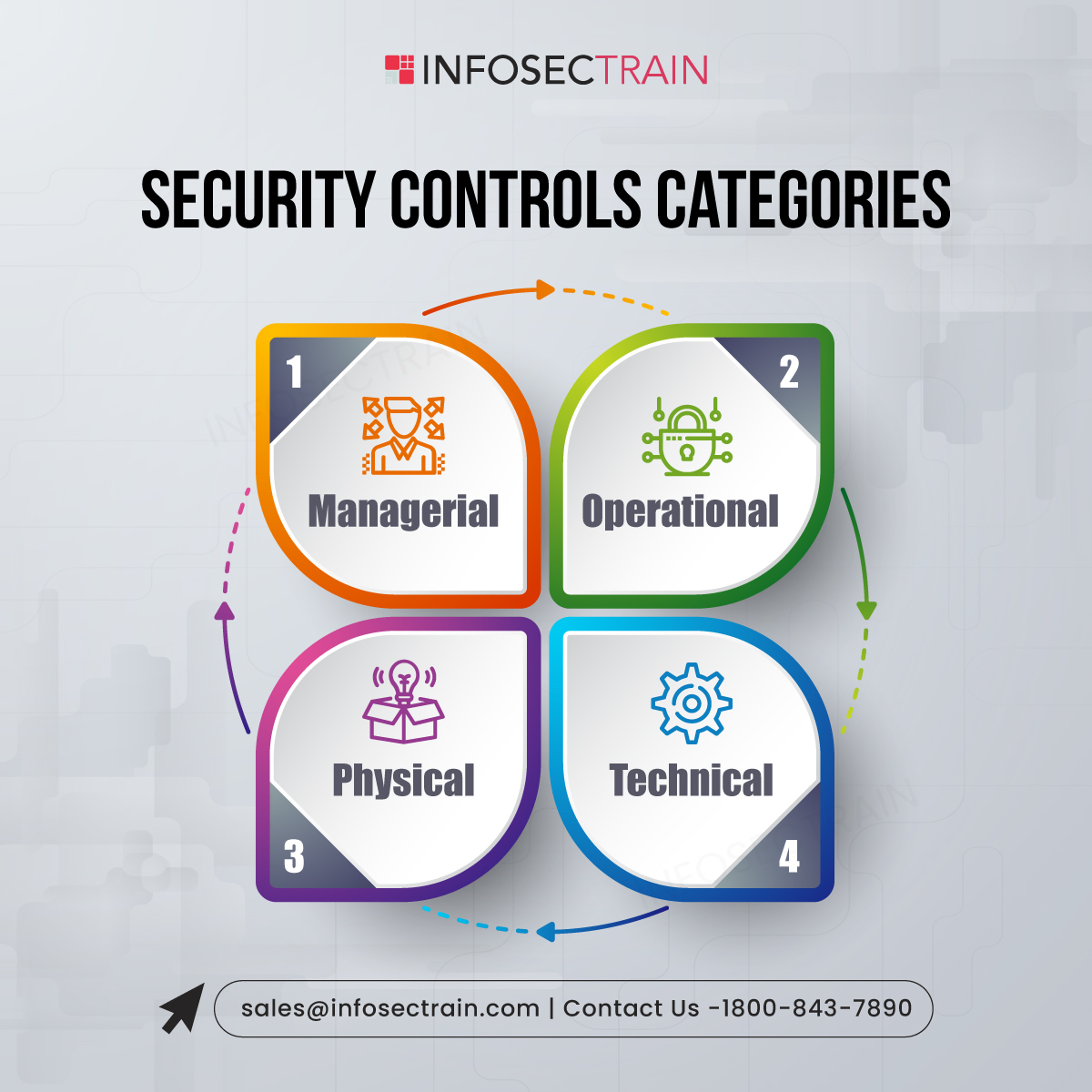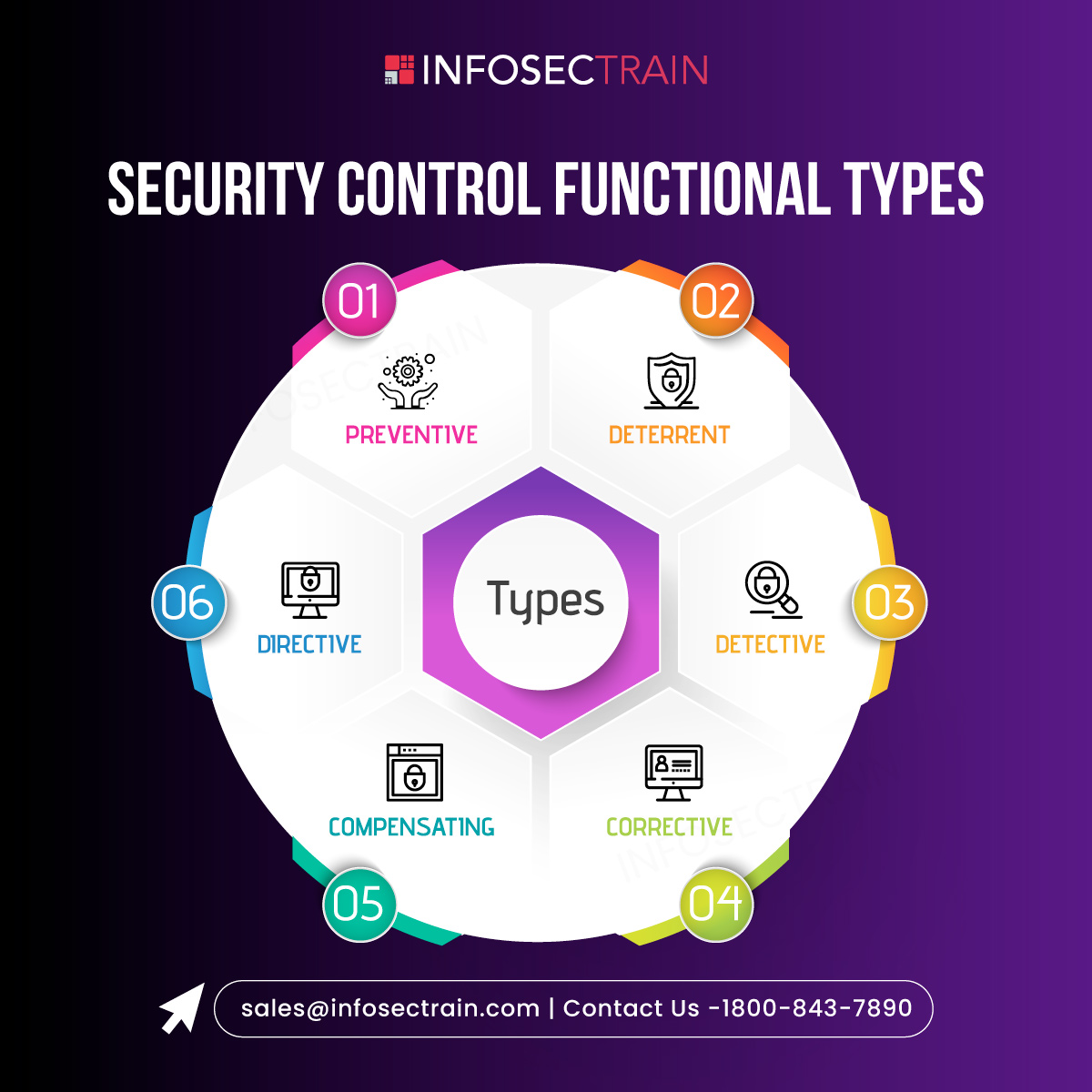Top Security Controls in Cybersecurity
The CompTIA Security+ certification focuses on the foundational aspects of cybersecurity. Within this exam, Domain 1, known as “General Security Concepts,” delves into various essential topics that form the core of security understanding.

In this blog, we will explore CompTIA Security+ Domain 1 section 1.1, “Compare and Contrast Various Types of Security Controls,” to gain an in-depth understanding of the security measures in the cybersecurity landscape.
Section 1.1 – Compare and Contrast Various Types of Security Controls
This section focuses on understanding the various types of security controls in cybersecurity. Its importance lies in offering the foundational knowledge needed to evaluate and implement appropriate security measures in different scenarios. The primary topics addressed in this section encompass:
Security Controls Categories
A security control is designed to impart confidentiality, integrity, availability, and non-repudiation to a system or data asset. Security controls can be categorized into four main groups depending on how they are implemented.

- Managerial Controls: Also known as administrative controls, these involve policies, procedures, and guidelines to supervise and manage the information system. Examples include security training and awareness programs, contingency planning, and risk assessments.
- Operational Controls: These are implemented primarily by people rather than automated systems. Examples include security guards, user management, change management, and incident response procedures.
- Physical Controls: These controls protect facilities, hardware, and other physical assets from external threats. Examples include locks, alarms, gateways, physical barriers, and surveillance cameras.
- Technical Controls: These are implemented through technology to automate security processes. They include hardware or software mechanisms to manage access and protect resources and systems. Examples include firewalls, intrusion detection systems, antivirus software, encryption, and OS access control models.
Security Control Functional Types
In information security, controls are classified based on their function. This functional classification helps in understanding how each type of control contributes to the overall security posture of an organization. The main functional types of security controls are:

- Preventive Controls: These controls aim to prevent security incidents before they occur. Examples include firewalls, antivirus software, antimalware software, and access control mechanisms.
- Deterrent Controls: These controls might not physically or logically block access, but they psychologically discourage an attacker from trying to breach a system. Examples include warning signs, security policies, and the presence of security personnel.
- Detective Controls: These controls are crafted to identify and document any attempted or accomplished intrusion. A detective control functions when an attack is in progress. Examples are intrusion detection systems, log monitoring, and audits.
- Corrective Controls: These controls mitigate damage or restore systems after a security breach. Examples include backup and restore procedures and patch management systems.
- Compensating Controls: These are alternative controls used when principal controls are not feasible. They provide a comparable level of security. Examples include additional monitoring or manual processes in place of automated tools.
- Directive Controls: These controls are designed to direct, confine, or control subjects’ actions to force or encourage compliance with security policies, best practices, or Standard Operating Procedures (SOPs). Examples include security policy statements, signs, and guardrails.
Understanding these controls is significant for individuals preparing for the CompTIA Security+ certification, as they form the foundation for implementing and managing effective security measures within any organization or institution.
CompTIA Security+ with InfosecTrain
You can enroll in InfosecTrain‘s CompTIA Security+ certification training course to deepen your foundational understanding of cybersecurity. Our experienced instructors will provide you thorough understanding of different security controls that are essential for protecting information systems and networks against cyber threats. This knowledge will enable you to effectively implement security measures, manage risk appropriately, and contribute to the resilience of modern IT environments.
TRAINING CALENDAR of Upcoming Batches For Security+ SY0-701
| Start Date | End Date | Start - End Time | Batch Type | Training Mode | Batch Status | |
|---|---|---|---|---|---|---|
| 12-Apr-2025 | 25-May-2025 | 19:00 - 23:00 IST | Weekend | Online | [ Open ] | |
| 25-May-2025 | 05-Jul-2025 | 19:00 - 23:00 IST | Weekend | Online | [ Open ] |







 1800-843-7890 (India)
1800-843-7890 (India)